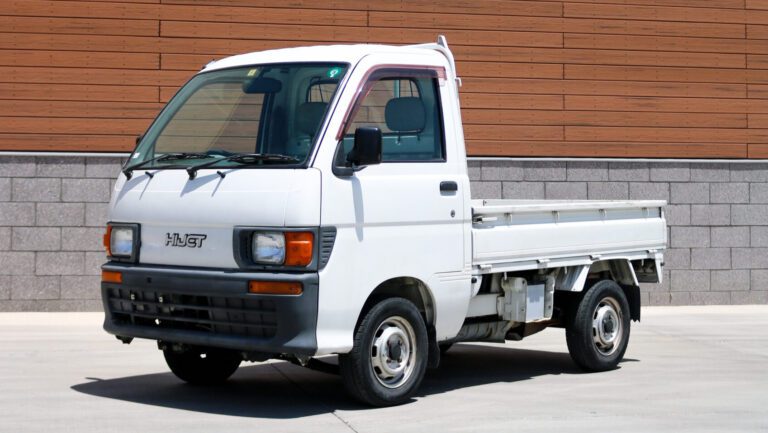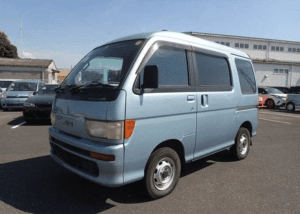Daihatsu Hijet Kei Truck: Ultimate Buyer's Guide

Among the compact utility vehicles hailing from Japan, the Daihatsu Hijet stands out, particularly its eighth generation (S100, S110, S120, S130). This lineage, unveiled at the 30th Tokyo Motor Show in October 1993, and produced from January 1994 to January 1999, is a testament to Daihatsu’s commitment to blending functionality with compact design.
Let’s delve into the various facets of the eighth generation Daihatsu Hijet that make it a noteworthy mention in the Kei truck category.
Engine and Performance:
The eighth generation Hijet came with a variety of engine options, the notable ones being a 659 cc EF-ES/NS I3 6-valve SOHC engine, a 659 cc EF-TS I3 6-valve SOHC turbocharged engine, a 659 cc EF-GS/VE/ZS I3 12-valve DOHC engine, and a 659 cc EF-RS I3 12-valve DOHC turbocharged engine. These engine variants provided a power output ranging from 44 PS (32 kW) in the fuel-injected SOHC 6-valve engine to 64 PS (47 kW) in the turbocharged DOHC 12-valve EF-RS engine.
Transmission:
The transmission options for this generation were a 5-speed manual or a 3-speed automatic, providing a flexible choice for different driving preferences. These transmission options ensure smooth gear transition whether navigating through bustling city traffic or cruising on the highways.
Design and Dimensions:
The eighth generation Hijet maintained a compact design with a wheelbase of 1,900 mm, a length of 3,295 mm, a width of 1,395 mm, and a height of 1,900 mm. The design was tailored for both personal and commercial use, offering 2/4-door Kei truck and 5-door Kei van body styles. The design evolution over the years, including the introduction of the sporty “Hijet IS” version and the electric “Hijet EV” Truck and Van versions, showcased Daihatsu’s ability to cater to a diverse consumer base.
Model Variants:
The eighth generation was rich in model variations. The two-wheel-drive versions were coded “S100“, while the four-wheel-drives were coded “S110“. The suffix “P” denoted trucks, “C” for panel vans, and “V” for glazed vans. The passenger-oriented Atrai received “S120” and “S130” chassis codes, with the Atrai focusing more on passenger comfort with a three-link independent rear suspension rather than the leaf sprung, live axle of the Hijet.

Daihatsu Atrai Van
Legacy:
The eighth generation Hijet, with its range of model variations, engine options, and design evolutions, has left a lasting mark in the compact utility vehicle segment. Its legacy continues to inspire the subsequent generations of Daihatsu Hijet, showcasing the enduring appeal of this compact yet versatile vehicle.
Venturing into the realm of overseas vehicle purchase can be a risky endeavor laden with potential scams. However, with Arizona Kei Trucks, you are in safe and trusted hands. We streamline the process of importing your dream Kei truck from Japan, ensuring a scam-free and seamless experience. As a trusted choice among enthusiasts and novices alike, we are your reliable gateway to owning a genuine Daihatsu Hijet. Make your way to our Import by Request service today, and drive home the Japanese compact utility legacy!
